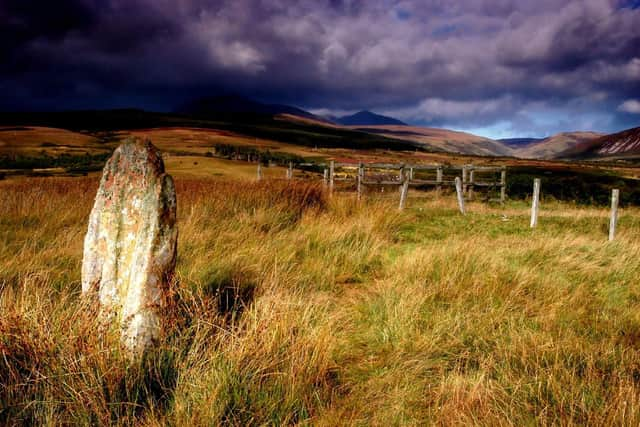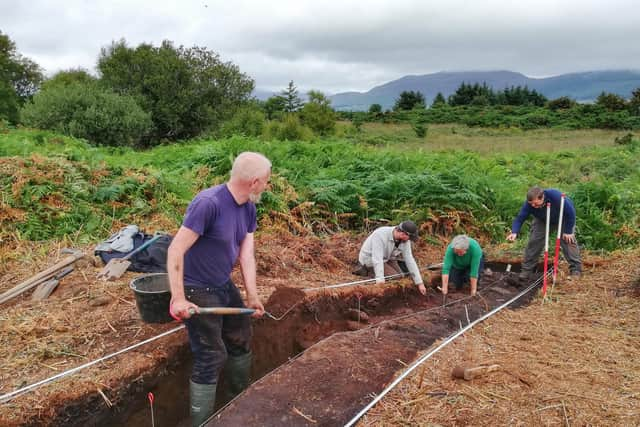Archaeologists search for 'enormous' ancient ritual site on Scottish island
An excavation is now underway at Drumadoon on the Isle of Arran after the site of a possible Neolithic cursus monument was earlier detected by an aerial laser scan.
Cursus monuments were typically formed of a long avenue, formed by two parallel mounds of earth – or wooden posts in the earliest cases – which stretch for some 800 metres at Drumadoon.
Advertisement
Hide AdAdvertisement
Hide AdThe monuments are believed to have been used for processions, possibly linked to the honouring of the dead, with the possible Drumadoon cursus reaching a vantage point over the Machrie Moor stone circle.


Dr Brophy said confirmation of a cursus monument at the site would add to “one of the most significant sacred landscapes of the Neolithic people”.
He said: “Curus monuments seemed to bring people together in a big labour project, where people were digging with sticks and using bone tools. They would have taken years to build.
“The end result was probably some sort of space for ceremony. They were used for processions. Dead bodies may have been moved from one end to the other.


"I think they were really the first large monument structures of Neolithic Britiain and the earliest one goes back to 3800BC.
"For whatever reason, they considered the building of these monuments incredibly important. They gave their time, a huge amount of resources and part of their land, which could have been used for farming.”
Dr Brophy said the site had been an “unknown monument” until the laser scan by Historic Environment Scotland.
He said: "In terms of it being a cursus monument, well I don’t want to get too excited. It is incredibly rare to have a cursus survive as earthworks.”
Advertisement
Hide AdAdvertisement
Hide AdEach of the two earth banks at Drumadoon are roughly 7-8m wide, around half a metre high and potentially created a “enormous routeway” across the landscape.
Dr Brophy said the site was hidden by bracken and “completely untouched” by modern agricultural practice.
Evidence of an earlier wooden cursus monument at the site is also being sought.
He added: “There’s evidence of a lot of wooden monuments on Arran. The Machrie Moor stone circle is one kilometre away.
"Before there were stone circles there, there were wooden circles. We could be looking at a landscape of wooden monuments that were changed to stone in time.
“This is one of the most significant sacred landscapes of the Neolithic people. There is a real richness to it.
"It’s preserved because it is one an island and it’s been allowed to survive. It’s untouched and it’s magical to have this.
“I’ve been doing this or 25 years and you never lose that excitement or sense of privilege of being able to unpick the stories of the people who are connected to these sites.”
Advertisement
Hide AdAdvertisement
Hide AdAlso at the site is Dr Gavin MacGregor, director of Northlight Heritage, which recently helped produce three films in the ‘Arranology’ series that examine the geology, archaeology and ecology of the island.
Dr MacGregor said: “Arran has an impressive concentration of Neolithic monuments so if you were going to find something like this, it would be on Arran.”
A message from the Editor:Thank you for reading this article. We're more reliant on your support than ever as the shift in consumer habits brought about by Coronavirus impacts our advertisers.
If you haven't already, please consider supporting our trusted, fact-checked journalism by taking out a digital subscription.
Comments
Want to join the conversation? Please or to comment on this article.
